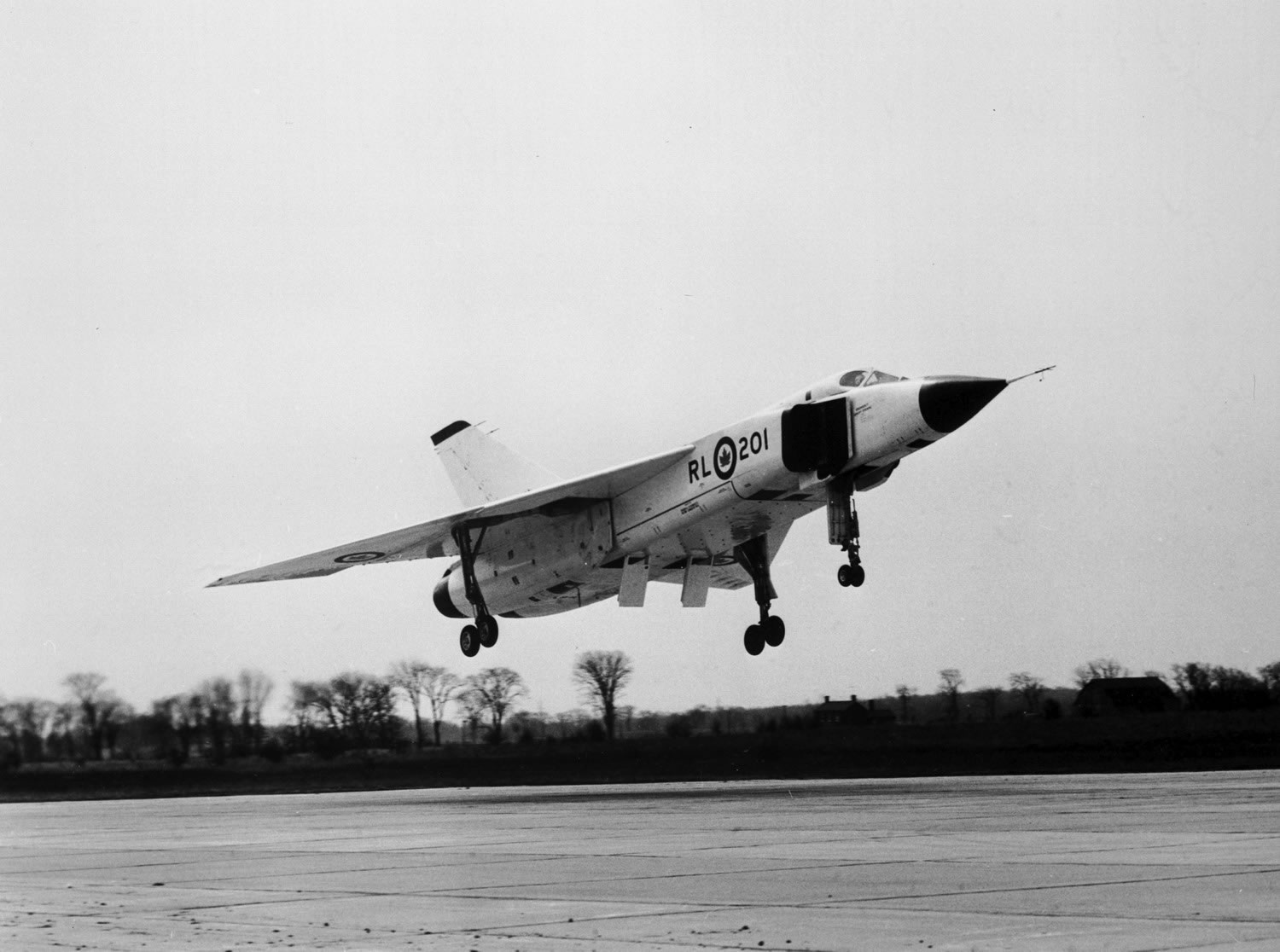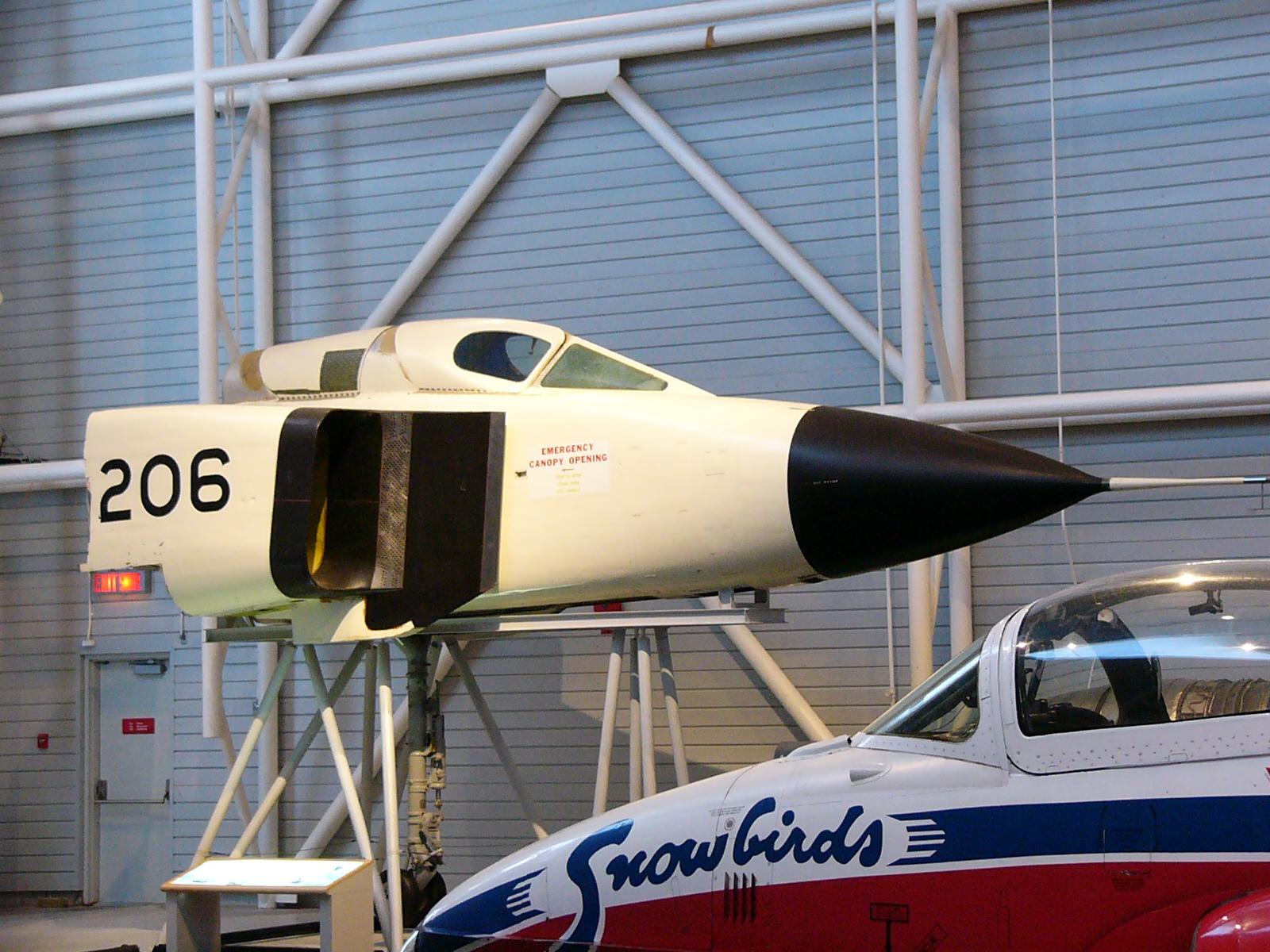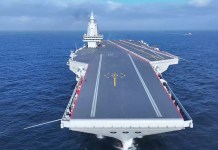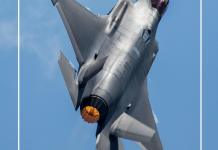Exactly sixty-six years ago, Canada made the historic decision to cancel the Avro Arrow (CF-105) program, a move that dashed the nation’s chances of becoming a dominant force in military aviation and engineering.
The CF-105 Arrow, one of the most advanced supersonic fighters of its time, was meant to propel Canada into the elite ranks of aerospace powers.
However, in a controversial and still-debated move, the program was abruptly terminated less than a year after the aircraft’s first flight, long before it could reach its full operational potential.
Canada developed the CF-105 Arrow as a solution to the growing Cold War threat posed by nuclear-armed Soviet bombers to protect its airspace with superior speed and technology.
In the early 1950s, advancements in Soviet long-range bomber technology had become a major concern for Western nations, including Canada, which found itself on the front lines of North American air defense.
Recognizing the urgent need for a high-performance interceptor capable of countering this threat, Canadian defense planners initially turned to improving an existing aircraft, the Avro Canada CF-100 Canuck.
The CF-100, a domestically designed, twin-engine, two-seat subsonic jet, had proven to be a reliable and capable fighter, serving the Royal Canadian Air Force (RCAF) well for many years.
However, it was not originally engineered for the high-speed, high-altitude interception required to engage fast-moving Soviet bombers.
Moreover, efforts to upgrade its performance yielded diminishing returns, which ultimately led to the realization that an entirely new aircraft would be needed to meet Canada’s evolving defense needs.
In 1953, the RCAF issued Specification AIR 7-3, which laid out the requirements for a next-generation interceptor. The new aircraft had to be highly advanced, with the ability to cruise at Mach 1.5 at an altitude of 50,000 feet within five minutes of takeoff.
It also needed to have an operational range of 300 nautical miles at standard speeds and 200 nautical miles at high-speed intercepts. Additionally, it had to be capable of operating from a relatively short 6,000-foot runway and have a rapid turnaround time of just 10 minutes between missions.
After surveying potential aircraft from leading manufacturers in the United States, Britain, and France, the RCAF concluded that no existing design could meet these ambitious demands.
As a result, Canada developed its cutting-edge interceptor from the ground up. The challenge fell to Avro Canada, which embarked on one of the most ambitious aerospace projects in the nation’s history.
The Rise Of The Avro Arrow
Avro Canada was established as part of Britain’s strategy of dispersing military production across “shadow factories” in preparation for World War II. During the war, the company contributed to the war by manufacturing legendary aircraft such as the Hawker Hurricane and the Lancaster Bomber.
Following the war, Avro Canada shifted its focus to groundbreaking aviation projects. In 1949, it introduced the C-102 Jetliner, North America’s first passenger jet, and the world’s second jet airliner. A year later, the company unveiled the CF-100 Canuck, Canada’s first and only mass-produced jet fighter.
When tasked with developing a high-speed interceptor to counter Soviet bombers, Avro Canada committed significant resources to the project.
What began as an ambitious project quickly became one of the most complex engineering challenges of its time, testing the limits of scientific knowledge, the company’s capabilities, and the Canadian government’s budget.
Avro engineers pioneered several cutting-edge technologies to meet the Royal Canadian Air Force’s (RCAF) demanding specifications.
They developed the world’s first non-experimental fly-by-wire control system, integrating computerized flight controls instead of traditional manual ones. They also introduced a real-time telemetry-based navigational computer. The aircraft’s airframe featured advanced new materials.
The Arrow was so advanced that Canada lacked the facilities to test it fully, requiring Avro engineers to use American resources, such as the National Advisory Committee for Aeronautics (NACA) supersonic research center in Virginia.

The aircraft and its Canadian designers left a lasting impression on their American counterparts. This connection would later play a role in shaping NASA when NACA transitioned into the space agency in 1958.
Development of the Arrow began in 1955, and in an impressive feat of engineering, the first prototype was publicly unveiled on October 4, 1957. However, its debut was overshadowed by the Soviet Union’s launch of Sputnik I on the same day, an event that marked the beginning of the space age.
The sleek, white, delta-winged Arrow was an imposing aircraft. Designed for a two-person crew, it measured nearly 78 feet in length with a wingspan of 50 feet, making it larger than its predecessor, the CF-100 Canuck, and even the American F-4 Phantom, which entered service years later in 1961.
On March 25, 1958, the Avro Canada CF-105 Arrow took to the skies for its maiden flight, piloted by former WWII Polish fighter ace Janusz Żurakowski. The aircraft performed exceptionally well, going supersonic on just its third flight.
Despite some initial issues with the landing gear, these were quickly resolved, and by February 1959, the Arrow had successfully completed its test program and was ready for evaluation by the RCAF.
In total, four prototype aircraft, designated RL-201, RL-202, RL-203, and RL-204, were constructed as Arrow Mk 1 models.
These aircraft were powered by Pratt & Whitney J75 engines and temporarily equipped with interim avionics, although the final design was intended to feature the more powerful Orenda Iroquois engine, an in-development lightweight, high-thrust turbojet.
The Arrow Mk 1s completed 66 flights. In addition, two Arrow Mk 2 aircraft, marked RL-205 and RL-206, were built. These were considered production-ready models fitted with the advanced Iroquois engines. RL-205 completed just one flight but was grounded due to engine issues, while RL-206 never took to the skies.
There were also plans for even more advanced versions of the Arrow, including a Mach 3 variant and a hypersonic Mach 5 version.
Additionally, a “zero-length launch” concept was proposed, where the Arrow would launch vertically from a raised platform, reminiscent of Thunderbird 1 in the classic science fiction series.
The Fall Of The Avro Arrow
The development of the Avro Arrow (CF-105) was not without opposition, particularly from senior figures in the Canadian Army and Navy, who resented the enormous financial resources it consumed.
When the Liberal government lost power to the Conservatives in 1957, the new administration, led by Prime Minister John Diefenbaker, was quick to scrutinize public spending. They accused their predecessors of reckless financial management, with the Arrow program becoming a prime target of criticism.
Shortly after taking office, Diefenbaker’s government signed an agreement with the United States to form the North American Aerospace Defense Command (NORAD), a joint air defense initiative.
At the same time, intercontinental ballistic missiles (ICBMs) were emerging as the next major threat, leading the US to prioritize missile defense systems over traditional fighter interceptors.
Recognizing that Canada could not afford to invest in both an advanced jet program and a missile defense system, Diefenbaker made a decision that would change the course of Canadian aerospace history. On February 20, 1959, now remembered as “Black Friday,” he abruptly canceled the Avro Arrow project.

The cancellation sent shockwaves through the country. More than 14,500 highly skilled engineers, technicians, and factory workers lost their jobs overnight, crippling Canada’s aerospace industry.
With no future in Canada, some of the country’s brightest aerospace engineers left for the United States, where many later played a major role in NASA’s Apollo program.
What made the situation even more controversial was the government’s insistence on destroying all existing Arrow prototypes, blueprints, and related documents.
Despite offers from the United States to purchase the completed aircraft and a request from Britain to use the Arrow for supersonic research, Diefenbaker’s administration ordered the immediate dismantling of all prototypes. To this day, only small fragments of the Arrow remain in museums.
The Lost Arrow
Following the cancellation, rumors began to swirl that one Arrow may have escaped destruction. Comparing early and later photographs of the aircraft being dismantled, some observers noted that the RL-202 prototype appeared to be missing.
Later, Canadian journalist June Callwood, who lived near the Avro plant, claimed to have heard an Arrow take off on the day of its cancellation. In 1968, Air Marshal Wilfred Curtis, a key figure behind the Arrow project, refused to confirm or deny whether one of the aircraft had been secretly flown to safety.
Further fueling the mystery, Avro draftsman Ken Barnes, outraged by the abrupt cancellation, secretly hid blueprints of the Arrow in his basement rather than destroy them. Decades later, his nephew discovered the documents after Barnes’ death.
Other Avro employees also managed to smuggle out various Arrow components and classified documents, suggesting an effort to preserve parts of Canada’s greatest aerospace achievement.

Over time, scattered discoveries of Arrow-related artifacts—including ejector seats found in the United Kingdom, intensified speculation that one of the jets had been smuggled to Britain.
One report even detailed an eyewitness account of a mysterious, unmarked white delta-wing aircraft landing at an RAF base in Kent during the 1960s. Could this have been the lost Arrow?
Whether an intact Avro Arrow still exists remains one of Canada’s most intriguing aviation mysteries. To many, the disappearance of RL-202, combined with the hidden documents and salvaged artifacts, suggests that one of the greatest aircraft of its era may still be out there, waiting to be discovered.
Conspiracy Theories And Lingering Doubts
The abrupt cancellation of the Avro Arrow program sparked widespread speculation, with numerous rumors and myths emerging to explain the decision, many of which persist to this day.
One of the most enduring theories is that the United States played a covert role in influencing Canada’s decision. According to this theory, the US misled Canada about the evolving Soviet threat and steered the government toward missile defense and away from advanced fighter interceptors.
Some believe this was because the Arrow, had it entered full production, would have outperformed American aircraft—something Washington allegedly wanted to avoid.
The sentiment that the US was interested in the Arrow’s demise is reflected in an old Canadian joke: “The best thing that ever happened to America was the cancellation of the Arrow.”
This notion led many Canadians to instinctively blame their southern neighbor for the downfall of what could have been one of the most advanced aircraft of its time.
Another theory points to a deliberate intelligence misinterpretation within Canada itself. Some claim that Canadian intelligence analysts skewed threat assessments to align with a decision that had already been made at the highest levels of government, effectively giving Prime Minister Diefenbaker the justification needed to scrap the program.
Whether these theories hold any truth remains a topic of debate, but what is certain is that the Arrow’s cancellation was a turning point in Canadian aerospace history.
- Contact the author at ashishmichel(at)gmail.com
- Follow EurAsian Times on Google News




